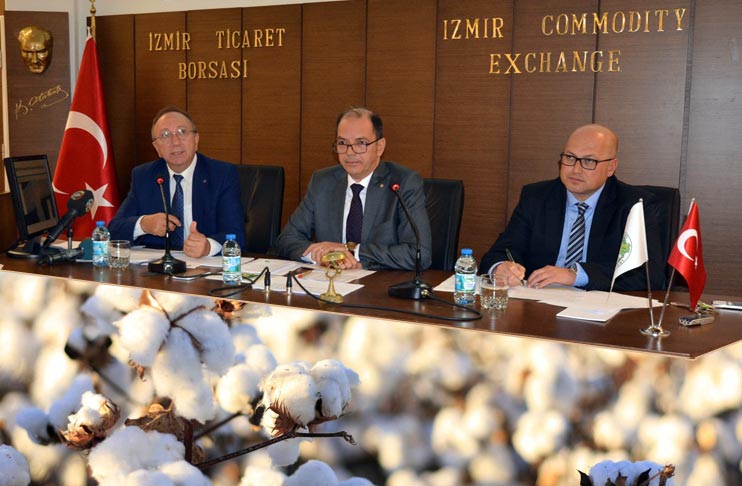The Aegean Region managed to achieve increases in both cotton cultivation area and efficiency compared to the previous year.
Industry representatives were pleased with the growth in cotton production in the Aegean Region. 2016 Cotton Crops Projections in the Aegean Region were revealed within the leadership of Izmir Commodity Exchange Market (İTB) and cooperation of Izmir Chamber of Commerce, Aegean Exporters Association, Söke Chamber of Commerce and Aegean University, Faculty of Agriculture, Soil Division. Accordingly, cotton output is expected to rise 25% to 427,243 tons in 2016. Also, cotton cultivation area is projected to increase by 10.8% to 91,553 hectare. Based on cities, cotton cultivation areas posted following increases this year: Aydın 6.26%, Izmir 18.27%, Denizli 34.56%, Mugla 27.13%, Balıkesir 63.34%. However, the figure was down by 2.52% in Manisa.
According to this data, the average output of cotton unseed is expected to be 427.243 tons, while yield per cotton gin in the new season will be at 39%. With this figure, cotton gin production is anticipated to be at 166,635 tons. The production is aimed to hit 1 million tons in 2018.
ITB’s study reveals that 920,000 tons of cotton (USD1.4 billion) was imported during 2015-2016. Executives underline that manufacturers need to receive sufficient subsidies in order to sustain their production, while the 74 piastre premium amount announced for this year was important for them.
ITB Board Member Bülent Uçak stated that they have been carrying on cotton crop studies via satellite imaging for almost 17 years since 2000. “We should target to produce at least 75% of total cotton requirement of our textile industry. We hope to see that vision in basin model which is due to be applied by 2017,” he continued. Quality is among the most important factors in cotton production and cotton seed, while too many kinds of seed variety should be ended, according to Uçak. He further noted, “The market needs long lasting and clear steps to be taken regarding cotton standardization.”


